LUCY BURDETTE: It's always a pleasure to welcome my friend Elise Hart Kipness to the blog, this time with the third book in her Kate Green series. I love hearing about how authors evolve as they write and Elise has a fascinating story--she's gone from working from the seat of her pants to planning out her plot. Read on to read about this, and about her third Kate Green adventure, CLOSE CALL!
ELISE HART KIPNESS: One of the most common questions authors get is whether you are a plotter or a pantser. Are you someone who outlines before you begin your manuscript? Or are you someone who dives in not knowing where your story is going? Hence, flying by the seat of your pants—a pantster. I began very much as a pantser. And with each new book, I find myself becoming more and more of a plotter.
For LIGHTS OUT, my debut novel, I definitely was, if we are going to lean into the analogy, someone who tried on many, many pairs of pants. I rewrote that manuscript a lot of times. From speaking with other author friends, that seems typical of first novels. There’s a lot to master with a first book—suspense, plot, characters, setting, on and on. And then, there is weaving those elements into a story so you aren’t presenting readers with blocks of information. Hence, the hefty wardrobe changes. For the sequel, DANGEROUS PLAY, I dipped my toe into plotting in a number of ways. I made sure I knew the ending. I thought through red herrings and clues (even color coding them). And I created storyboards on poster board, Excel spreadsheets and even tried Scrivener. Maybe I was a little bit more organized, but I still found myself somewhere between pantsing and plotting. I still deviated from my plot in different parts of the manuscript.
CLOSE CALL, the third in the Kate Green series, was a different animal. I chose the Excel spreadsheet, making one column for chapters and the other for plot points. It wasn’t a traditional outline. I wrote a short paragraph for each chapter, highlighting how the plot point connected to the crime. I stuck to it for about eighty-percent of the story and kept the ending I had envisioned.
As I continue with my next book, I’m finding that the spreadsheet method is working even better this time around. I think part of my progression has to do with the natural learning curve we undertake as writers. I find I’m able to see the arc of my story more clearly in my brain. I am able to hold more information. It’s like I’ve finally memorized my multiplication tables so I can now attempt more complicated math without stopping to count on my fingers.
Not to say that I don’t love discovering character traits and actions as I write. With only a short paragraph on my spreadsheet, I do find myself learning many new things about my story as I go. In fact, having my roadmap gives me a sense of confidence to lean into new twists and predicaments.
So, my question to all the writers out there is this. Has your process evolved? Or do you stay with the same strategy you’ve always used? And to our wonderful readers, have you noticed an evolution in an author’s plotting as they publish more books?
ABOUT THE BOOK: With a hard-won Emmy now gracing her mantel, sports reporter and former Olympian Kate Green turns her energy to the action unfolding in Flushing Meadows. Working on a feature for her weekly TV show, she spotlights two of today’s biggest female tennis stars: the sunny up-and-comer and the brash veteran. But the project goes sideways when one turns up missing.
Following an interview with Kate, one player receives a sinister text with a disturbing photo of the other woman, bound and gagged. Kate calls on her estranged father, an NYPD detective, for help in launching a search. Although wary he’s hiding something, she’s not sure where else to turn.
Their investigation leads to the victim’s hometown—and a growing list of suspects. The kidnapper threatens to spill secrets that could destroy lives. Tangled up in a deadly web of deceit, Kate races to connect the dots and find the missing player…before it’s too late.
ABOUT THE AUTHOR: Elise Hart Kipness is a national TV sports reporter turned bestselling author of the Kate Green Series, which has been optioned by Universal Television and Mary J. Blige’s Blue Butterfly for TV development.
The series has received widespread acclaim, earning recognition as a Men’s Journal Top 10 Book of the Year, Woman’s Day Must-Read Selection, and Scripps News Beach Read Pick.
Like her protagonist, Elise chased marquee athletes at the US Open and stood under glaring lights at Madison Square Garden reporting for Fox Sports Network and WNBC-TV (New York). In addition to writing, Elise teachers crime fiction at Westport Writers’ Workshop.








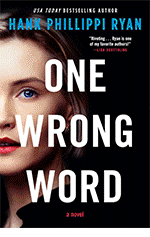
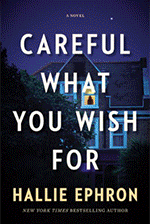
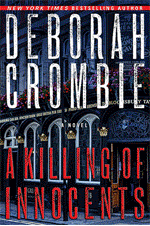
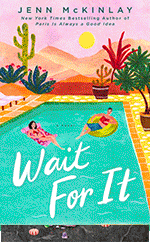
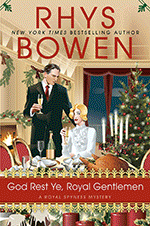
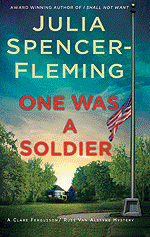
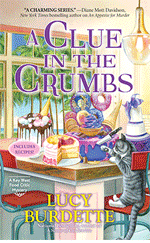
Congratulations on your new book, Elise . . . it certainly sounds as if Kate has an exciting case to solve! I'm looking forward to reading the story . . . .
ReplyDeleteI have to confess that I don't always notice an author's evolution in plotting . . . when I get pulled into a story I just keep on reading!
Thanks Joan for the congrats!! I think the fact that you don’t notice means the authors are doing it right!!!
Deletebtw Joan, the above comment is me. I just couldn't figure out how to log on from my phone but I'm on my computer now.
DeleteCongratulation Elise. I am looking forward to reading your new book!
ReplyDeleteLucy, will it be possible to have a discussion with others who have read The Mango Murders? I loved the book but have so many questions! I highly recommend it. I love that Hayley and Nathan's lives are moving forward. So many changes coming up.
Maybe this discussion can be done on the REDS and READERS FB group?
DeleteThat's a good idea, but I'm not on FB.
DeleteI would love to discuss Mango, let me figure out how to do it. Maybe we could do a zoom?
DeleteAh, that's too bad. There's over 3500 members on the REDS FB group, so there would be more input for discussing MANGO MURDERS.
DeleteLast night's Book Birthday party was wonderful. Our friend Roberta/Lucy delivered her remarks with candor and such wry humor that she had us all in stitches! I looked forward to this event and was richly rewarded for being there. I have my new copy of The Mango Murders and when we have all had a chance to read it, it would be lovely to discuss it, with spoilers, like a book club would.
DeleteThanks Lucy, Good point Grace. I'll see if my hubby can get me onto the Reds FB.
DeleteThank you!!
DeleteCongrats on your new book, Elise.
ReplyDeleteThanks!!
DeleteELISE: Congratulations on CLOSE CALL! The pantser vs plotter issue has fascinated me. I can't imagine being able to switch/evolve my writing from a pantser to a plotter. I have heard other authors say they tried it for one book, and went back to their old ways. Hope this writing evolution works for you in future books!!
ReplyDeleteFunnily enough, I've moved the other direction from plotter to pantser. But I'll stop midway to figure out what's going on. I think Elise might be doing something similar but on a bigger scale?
DeleteThanks Grace! I was surprised by it too. Maybe deep down I was meant to be a plotter. :)
DeleteElise, new stories always welcome. But by the careful outline or the seat of the pants? If it is a good story or a bad one, I never think about it. All I do is keep reading the good one. A poor analogy, but not yet fully caffeinated, stories are like laws and sausage, I don’t care to know how they were made. Elisabeth
ReplyDeleteIt's a good analogy, lol! And I hear you about the caffeine. Just like my main character, Kate, I am a major coffee addict.
DeleteCongratulations on CLOSE CALL, Elise. From what the JRW authors have discussed, it seems that most authors, even the pantsers, know something about where they want their stories to go, but use different methods. I am sure that some writers are more "seat of the pants" than others. I don't think that I can tell the difference when I am reading. I do sometimes notice how an author may change over time, but I certainly don't know whether it was a change in their pantser/plotter method. If the story is good and the character are vibrant, that's a good start.
ReplyDeletethanks for coming last night Judy, such a treat to have you there! xo
DeleteIt was great to be there. As long as I can do so, I'll try to be there. We are so lucky to live in such a compact state!
DeleteLucy, you are a very engaging speaker! You WOW us every time!
That makes a lot of sense. Thanks for the congrats!
DeleteCongratulations on the new book, Elise. Interesting that your method has changed. Do you think it will stick?
ReplyDeleteForty books in, I have pretty much stayed with how I've always worked. I have to write a synopsis for my editor before I start the book, but it's very short and very rough - and it changes. I plot only a few scenes ahead. When I know too far ahead of time what's going to happen, I get bored and want to stop writing!
Edith, what an interesting point. I often wonder if writers can be so deeply invested in plotting that they throttle the opportunity for their characters to grow, learn and evolve or devolve as may be. I think that if I ever get the courage to attempt one of the books flitting around my brain, it would be very much as you described. I know where it starts and where it ends, it is the filler that fascinates and intimidates me. To plot it would be to take away the joy of learning about the characters, to my way of thinking. -- Victoria
DeleteEdith, I've heard Rhys say the same thing--too much planning and she's bored.
DeleteGreat question Edith. I'm not sure what will happen. I wonder if as we write more and more books, we are able to do things without realizing we are. For example, when we first learn the multiplcation tables, we usually count on our fingers. At least I did. Then all of a sudden, we just know those answers. Does that translate to writing? Do we automatically just know things that save us steps?
DeleteMany times I have accurately detected that an author is a pantser when their books have been kind of muddy in the middle as they are sort of flailing around trying to get to that end they envisioned. It keeps me from making those 4 and 5 star books. If an author is really good at editing and rewrites they are more successful as a pantser. Whether you plot or pants it takes a lot of work to keep the story tight.
ReplyDeletePerhaps morphing from pantser to plotter is what makes a series seem to improve as it goes along.
Such great points Brenda! BTW, Elise is in California this morning so probably off her schedule...she'll be here.
DeleteHi Brenda! I do think that plotting out my main thread helps me keep my book tight. At least, that's my hope. Let me know if you read it. XO
DeleteElise, I haven't yet read your books, but it will be interesting to start from the beginning with your change in writing technique in mind. Will I notice a difference...Annette
ReplyDeleteHi Annette. I'd love to know if you notice the change. Great experiment for me.
DeleteCongratulations on your new novel, Elise and welcome to Jungle Red Writers! Thank you for sharing your writing journey. Since I started writing my debut novel, I am still figuring out what works for me. Every day I review each section from my online writing classes. This writing instructor emphasizes the importance of making the time to write. It is important to make the time.
ReplyDeleteMay I ask if you started writing stories as a young child or a teenager?
As a reader, do I notice the author's plotting? I cannot spot the difference between a pantser and a plotter. What matters to me is a good story that grabs my attention.
Hi Diana. HUGE congrats on your manuscript. That first book is a hard journey...but also wonderful because you are learning so much about craft and yourself. My transformation to author was a little circuitous because I started as a reporter, even back in high school on the local sports magazine. I always loved writing, though. It has been a safe place for me. How about you? Did you always write?
DeleteHi Elise, thank you for your kind words. It is definitely a learning process for me. I've noticed that reporters often become authors. As I recall, I think I started writing stories in the 4th grade when I wrote little stories to accompany the new words, which I was learning in class. Like you, writing is a safe place for me.
DeleteThat was me, Elise.
DeleteCongrats on the book, Elise. I used to try to know the endings to my books. Emphasis on "try." They always changed - usually for the better. Although I have had a couple where I knew the rough structure of the end, even if I didn't know the identity of the murderer. It was more knowing the climax and the denouement.
ReplyDeleteI tried plotting, but I'm such a "rule follower," I wouldn't allow myself to deviate from the outline, even when it would have made a better book. So now I'm like Edith: I start, plot a few scenes, write those, rinse and repeat. It seems to work.
So interesting that you wouldn't allow yourself to deviate! I guess I fall into the rule breaker category:)
DeleteNope, complete mental block. "This is the outline and you must follow it!" It was very stressful.
DeleteLiz, when I find that I've written myself into a box, I always have to remind myself that I made the box, so I can change it.
DeleteI am generally a rule follower too, but here I make an aception. :)
DeleteCongratulations! I'm looking forward to reading CLOSE CALL!
ReplyDeleteI began as an full on pantser and have evolved into a semi-plotter. It's just a few chapters ahead at a time, but it lets me stay on course and follow the muse.
A kindred spirit!!
DeleteElise, CLOSE CALL sounds fascinating! I started as a pantser, and was having troubles with the last book, and tried Jessica Ellicott's polka-dot outlining method and found it super useful. I suspect, like anything to do with writing, it's a matter if finding a planning technique that works for the individual.
ReplyDeletealso finding the right tool at the right time, because the need can change.
DeleteI completely agree. It's like how kids learn---some are tactical learners, others visual, etc... Writers need to find what works for them. And for me that changed.
DeleteELISE! I am such a massive fan, and I adore this book! (and all of yours.) Let me put it this way--I have considered that it might be fun to have an outline. In fact, I know it would be fun to have one. And I could write a book really fast if I had one. It would be so efficient. AFTER I spent a hundred agonizing years making said outline, of course. But. I cannot make one. And so, I persevere. I do agree with you all, our methods change, and that's a product of experience. SO great to see you! xx
ReplyDeleteI am so grateful for your incredible blurb of CLOSE CALL! I am such a huge fan of yours!!! And I will be at your Barrett book event in Darien!! Sending love!
DeleteOH YAAAYYY!!! Thank you, that is so kind of you! xxx
DeleteHi Elise, and so nice to see you here! I am such a fan and CLOSE CALL sounds fabulous. If you are using spreadsheets, I would definitely put you in the "plotter" camp.
ReplyDeleteI've always used some sort of outline, and have always known who did what and why, but there have been a lot of deviations along the way. The standard is a rough big picture/storylines thing, then scene by scene a few chapters at a time. With lots of messy notes:-)
So great to see you too!! I am such a fan of yours also. I hear you with the messy notes. And I can't read my handwriting, so it's tough. LOL!
DeleteI’ve read most of the books written by the Reds. I know that some are plotters and some pantsers. But I can’t tell the difference. They’re all really good writers. Whatever each individual writer is doing, she’s doing it well!
ReplyDeleteDebRo
Hi Deb! I completely agree. They are all AMAZING!!!!
DeleteOne thing I've heard some writers say is that their characters write themselves, in other words, I think they are saying the characters have a mind of their own. I think it was Rhys who said that one of her characters revealed that he was claustrophobic or was it afraid of heights and she was surprised to know that.
ReplyDelete